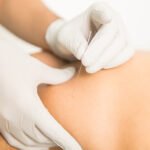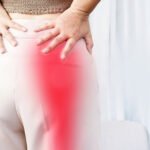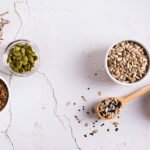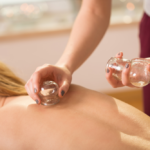What is Cupping Therapy?
An ancient form of alternative medicine, Cupping Therapy, also known as Hijama, involves the therapist applying special cups to the skin for a few minutes to generate suction. This procedure is a form of deep-tissue massage that can alleviate pain and inflammation and promote blood flow, relaxation, and overall well-being.
How Does Cupping Therapy Work?
Cupping therapy operates by forming a vacuum within the cups affixed to the epidermis. The suction draws the epidermis and superficial muscle layer into the cup. This process helps alleviate muscle tension, promote cell repair, and facilitate other healing processes by increasing blood circulation to the area where the cups are situated.
What Are the Benefits of Cupping Therapy?
- Pain Relief: Effective for migraines, neck and back pain.
- Decreased Inflammation: Assists in the reduction of inflammation and the promotion of healing.
- Enhanced Blood Flow: Promotes detoxification and improves blood circulation.
- Relaxation: Offers a feeling of relaxation and well-being akin to a massage.
- Skin Health: Enhances skin conditions and diminishes the appearance of cellulite.
Is Cupping Therapy Safe?
Indeed, cupping therapy is generally considered safe when administered by a qualified professional. Nevertheless, it may result in minor skin irritation, discoloration, or discomfort. Therefore, it is imperative to consult with a skilled practitioner to guarantee that the therapy is suitable for you.
What Should I Expect During a Cupping Therapy Session?
During a session, the therapist will position cups on specific areas of your body, such as your back, shoulders, or neck. The containers may be left in their current position for 5 to 15 minutes. The application of the cups may induce a constricted sensation; however, this typically subsides as the session advances.
What is the best way to prepare for a cupping therapy session?
Maintain Hydration: Consume abundant water before and after your workout.
- Avoid Consuming Heavy Meals: Before your appointment, consume a light meal or refreshment.
- Dress in Comfortable Clothing: Wear loose, comfortable clothing that makes it simple to access the treated areas, such as your back and shoulders.
Are There Any Side Effects of Cupping Therapy?
Bruising is the most prevalent adverse consequence of the containers’ application. Typically, these bruises are harmless and resolve within a few days. Mild discomfort, skin irritation, or dizziness may occur immediately following the session
Who Should Avoid Cupping Therapy?
Cupping therapy is not suitable for all individuals. It is not advised for:
- Women who are pregnant
- Individuals who are affected by skin conditions like dermatitis or psoriasis
- Individuals with blood coagulation disorders
- Individuals with severe chronic ailments or specific heart conditions
How Often Should I Get Cupping Therapy?
The frequency of cupping therapy sessions depends on health conditions and individual requirements. Some individuals may find weekly sessions advantageous, while others may find monthly sessions adequate. It is advisable to consult with your therapist regarding your specific requirements.
Can Cupping Therapy Be Combined with Other Treatments?
Certainly, cupping therapy can be incorporated with other treatments, including acupuncture, massage therapy, and physical therapy, to improve overall health and well-being.
How Can I Book a Cupping Therapy Session?
You can book a cupping therapy session by Contact Us through our website, calling at +92 331 8449461





